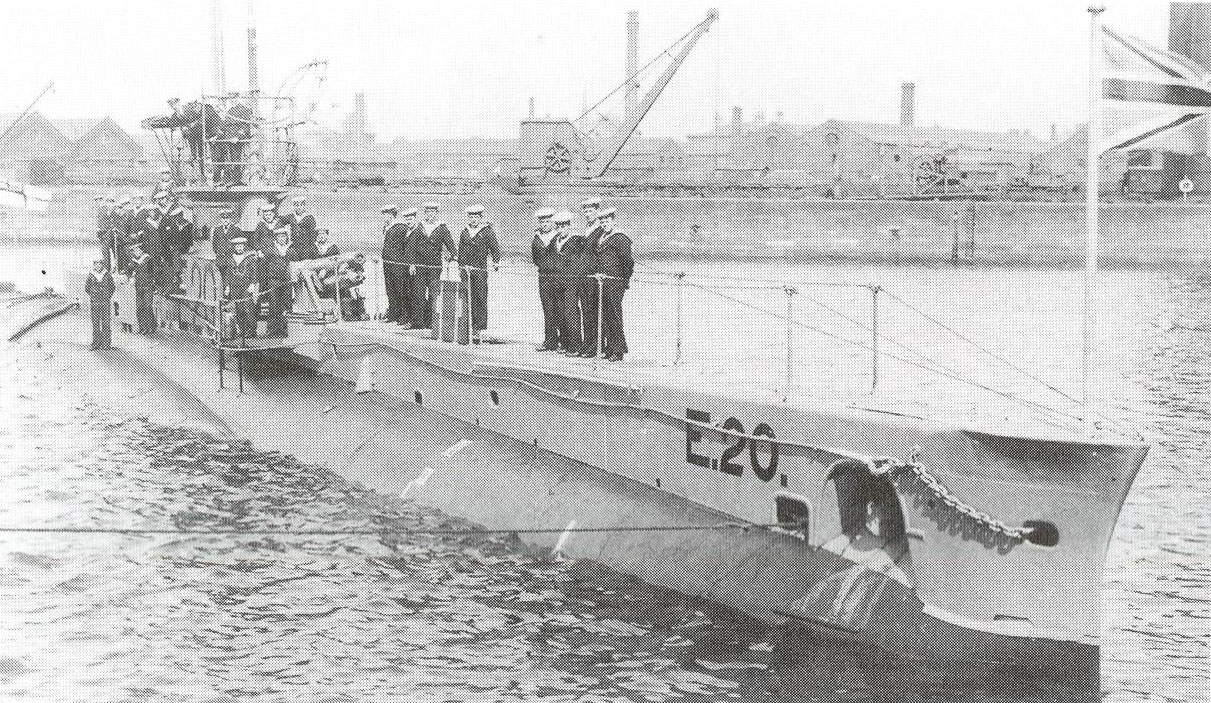HMS E56 on:
[Wikipedia]
[Google]
[Amazon]
 HMS ''E56'' was a
HMS ''E56'' was a
/ref> The submarine had a maximum surface speed of and a submerged speed of . British E-class submarines had fuel capacities of of diesel and ranges of when travelling at . ''E56'' was capable of operating submerged for five hours when travelling at . ''E56'' was armed with a QF 12-pounder 12 cwt naval gun, 12-pounder QF gun mounted forward of the conning tower. She had five 18 inch (450 mm)
 HMS ''E56'' was a
HMS ''E56'' was a British E-class submarine
The British E-class submarines started out as improved versions of the British D-class submarine. The E class served with the Royal Navy throughout World War I as the backbone of the submarine fleet. The last surviving E class submarines we ...
built by William Denny, Dumbarton
Dumbarton (; , or ; or , meaning 'fort of the Britons (historical), Britons') is a town in West Dunbartonshire, Scotland, on the north bank of the River Clyde where the River Leven, Dunbartonshire, River Leven flows into the Clyde estuary. ...
as Yard No.1033. She was laid down on 1 December 1914, launched 19 June 1916 and was delivered on 8 August 1916. ''E56'' was sold for scrap at Granton, Edinburgh
Granton is a district in the north of Edinburgh, Scotland. Granton forms part of Edinburgh's waterfront along the Firth of Forth and is, historically, an industrial area having a large harbour. Granton is part of Edinburgh's large scale Edinbur ...
, on 9 June 1923.
Design
Like all post-''E8''British E-class submarine
The British E-class submarines started out as improved versions of the British D-class submarine. The E class served with the Royal Navy throughout World War I as the backbone of the submarine fleet. The last surviving E class submarines we ...
s, ''E56'' had a displacement of at the surface and while submerged. She had a total length of and a beam of . She was powered by two eight-cylinder two-stroke diesel engines and two electric motors made by Crossley.Akerman, P. (1989). ''Encyclopaedia of British submarines 1901–1955''. 149–150. Maritime Books./ref> The submarine had a maximum surface speed of and a submerged speed of . British E-class submarines had fuel capacities of of diesel and ranges of when travelling at . ''E56'' was capable of operating submerged for five hours when travelling at . ''E56'' was armed with a QF 12-pounder 12 cwt naval gun, 12-pounder QF gun mounted forward of the conning tower. She had five 18 inch (450 mm)
torpedo tube
A torpedo tube is a cylindrical device for launching torpedoes.
There are two main types of torpedo tube: underwater tubes fitted to submarines and some surface ships, and deck-mounted units (also referred to as torpedo launchers) installed aboa ...
s, two in the bow, one either side amidships, and one in the stern; a total of 10 torpedoes were carried.
E-Class submarines had wireless systems with power ratings; in some submarines, these were later upgraded to systems by removing a midship torpedo tube. Their maximum design depth was although in service some reached depths of below . Some submarines contained Fessenden oscillator
A Fessenden oscillator is an electro-acoustic transducer invented by Reginald Fessenden, with development starting in 1912 at the Submarine Signal Company of Boston. It was the first successful acoustical echo ranging device. Similar in operat ...
systems.
References
Bibliography
* {{DEFAULTSORT:E56 British E-class submarines of the Royal Navy Ships built on the River Clyde 1916 ships World War I submarines of the United Kingdom Royal Navy ship names